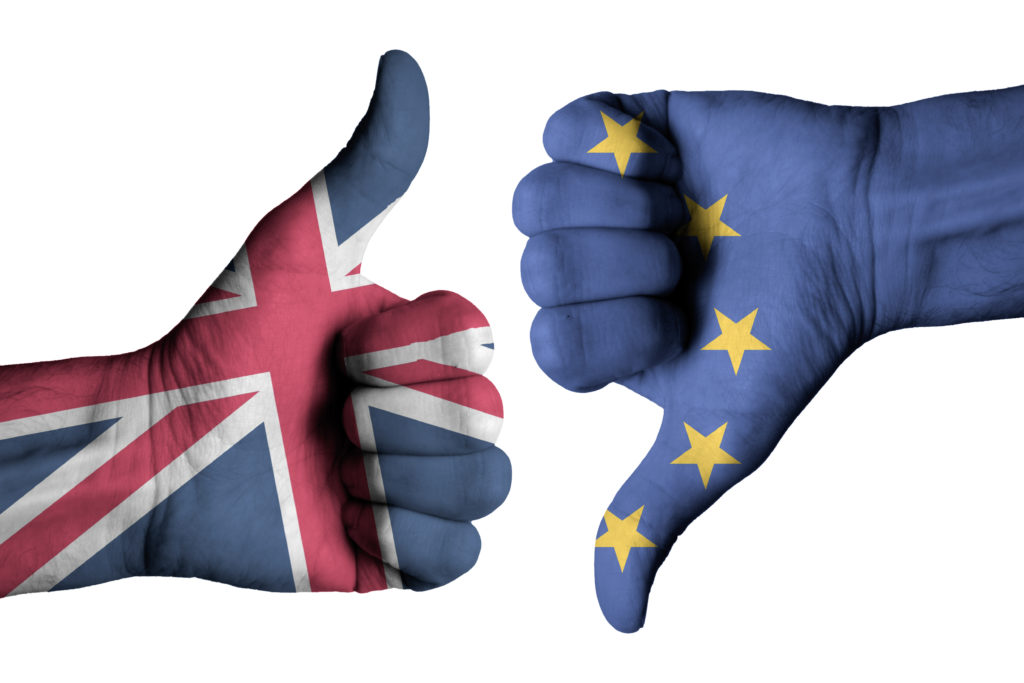Brexit again…? Of course!
STERLING
Sterling kicked off the week as the weakest of the G10 currencies amid reports that Prime Minister Theresa May had cancelled plans for an emergency cabinet meeting today to approve a Brexit deal in the face of strong opposition from her own cabinet and the EU. Negotiations are ongoing, however if there is no progress by mid-week, the European summit cannot proceed. Should an agreement be in place by late Wednesday, the summit can move ahead which will allow for the publication of the UK’s withdrawal agreement from the EU.
GBP/USD dropped lower this morning and touched a seven-session low of 1.2841. Brexit woes weighed although US Dollar strength, driven by last week’s expectation of another interest rate hike in December by the Federal Reserve, will have compounded it. Positive remarks from the EU’s chief negotiator, Michel Barnier, have supported the Pound this afternoon.
A busy week of macro data with labour market indicators out tomorrow, CPI on Wednesday and retail sales on Thursday.
US DOLLAR
The US Dollar started this week firmly on the front foot with the Dollar Index surpassing the 97 level with relative ease and rising to its best level since June 2017 at 97.58. Last week’s FOMC statement continues to provide support while the Greenback also benefitted from heavy losses in other major currencies.
Looking ahead, CPI data is due on Wednesday, retail sales and import prices on Thursday and industrial production on Friday.
EURO
The Euro softened last week weighed by a combination of Italian budget concerns and soft macro data; the European Commission rejected Italy’s 2019 budget last month, saying it flouted a previous commitment to lower the country’s deficit.
EUR/USD had touched 1.15 on Wednesday but fell thereafter with further losses seen this morning on the back of a broad dollar rally with the pair reaching its lowest level since June 2017 at 1.1240.
Looking ahead, German ZEW and CPI data are due tomorrow, Euro Zone GDP and industrial production on Wednesday and Euro Zone CPI on Friday.
JAPANESE YEN
The Japanese Yen continues to be driven by broader risk sentiment rather than domestic factors and has strengthened this morning as equities declined. USD/JPY remains elevated however with the pair trading above 114 this morning.
Q3 GDP figures are out tomorrow followed by industrial production on Wednesday.
SWISS FRANC
USD/CHF hit its highest level since April 2017 this morning at 1.0105 although EUR/CHF is down at a two-week low of 1.1352.
Some attention was paid to SNB talk last week from Governor Jordan and Board Member Maechler who both maintained that interventions remains a necessary tool.
A quiet week for data with only PPI out tomorrow.
AUSTRALIAN DOLLAR
The RBA left the Cash Rate Target unchanged last Tuesday at 1.50% but did nudge up their growth forecasts which provided a small lift to the Aussie Dollar. AUD/USD topped out at a six-week high of 0.7304 on Thursday but fell into the weekend as oil prices also declined. The pair is just about holding onto the 0.72 handle as we write having dropped below in earlier trade.
NAB confidence indicators are out tomorrow, wages on Wednesday and employment data on Thursday.
CANADIAN DOLLAR
The Canadian Dollar fell into the weekend, pressured by tumbling oil prices with USD/CAD jumping to a fresh 16-week high on Friday at 1.3233. Reports that a US Federal Judge had blocked the Keystone XL pipeline also weighed.
Data releases are sparse this week – ADP employment is due on Thursday followed by manufacturing sales on Friday.
NEW ZEALAND DOLLAR
The RBNZ left the OCR unchanged on Thursday at 1.75% while Governor Orr maintained that they are not taking the option of a rate increase off the table despite a more upbeat assessment. Reaction in the Kiwi was limited meanwhile although we had seen gains in the prior session on the back of stronger-than-expected jobs data.
NZD/USD topped out at a 14-week high of 0.6820 on Wednesday but has pulled back towards the 0.67 level.
This week brings food prices tomorrow and PMI on Friday.
SWEDISH KRONA
The Swedish Krona strengthened last week on the back of hawkish central bank rhetoric with Governor Ingves reiterating on Thursday that he expects to begin raising rates at some point over the next few months in either December or February.
EUR/SEK bottomed out on Thursday at a fifteen-week low of 10.2455 before finding support.
Wednesday’s CPI data will be the main focus for investors and could give clues as to whether the Riksbank will move in December or February.
NORWEGIAN KRONE
The Norwegian Krone has kicked off the trading week on the front foot, supported by solid gains in the oil markets although the upside has only reversed Friday’s CPI inspired drop.
EUR/NOK rose to a six-week high of 9.5317 after the data but has slipped back below 9.54.
Q3 GDP figures are out tomorrow while trade figures follow on Thursday.
To discuss how we can help protect your business against currency risk through Brexit negotiations, call us on 020 3876 5432.
